No post today. She is starting her second week of Middle School as a teacher in Roswell. We know she spent the summer in bliss dating this “Carsey” character while taking classes in Mexico City – and we just found out that a man named Bernard has entered her life.
Still to come: Her dream of playing the organ in church is fulfilled – but why is she feeling a bit melancholy?
Here is a look at what else was happening 80-years-ago today.
Hitler speaks at the 8th Nuremberg Rally
Police were called upon to end the Costa Rican banana workers’ strike, firing on strike leaders and arresting others
While Elizabeth takes a few days off – here is a look at what happened 101-years-ago this fall when her family had to escape the Mexican Revolution. Go to the Escape from Mexico page for more. This is the first part of the story as told by her father The Rev. JP Lancaster in the Atlanta Constitution March 22, 1914.
(Editors Note- Rev. J.P. Lancaster, now pastor of the Methodist church at Shawmut, Ga. Was until last September preacher and school teacher at Torreon, Mexico. He and his family, with several hundred other people foreign to Mexico, were compelled to flee when the rebels laid siege to the city. This article, written by Rev. Lancaster for The Constitution is a graphic description of the perils and adventures he and his party underwent in getting out of the Mexico territory.)
By Rev. J.P. Lancaster
On August 26, 1913, the state department at Washington sent advises to Consul General Hanns, Consul for the northern division of Mexico, advising all foreigners to leave the country as soon as possible.
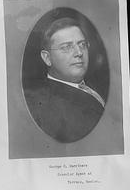
This message was delivered by Dr. Ryan to Consular Agent G.C. Corothers on September 1. Mr. Corothers then set about to get a train from Torreon to the border.
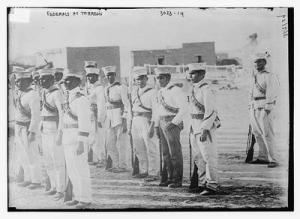
The city was in the hands of the federals, but Gomez Palacio and San Pedro, two cities through which we must pass, were held by the constitutionalists. The federals were not willing for the train to leave till they could regain these places and not risk a train on the territory of the enemy.
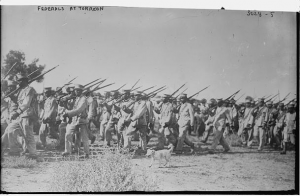
September 6 the federals took Gomez Palacio and later the rebels evacuated San Pedro and General Carranea with military and construction trains went over this road to build up the track to Monterrey, the city we hoped to reach.
Dr. Ryan remained in Torreon two weeks and as nothing was accomplished he went by automobile to Monterrey to try to work from the outside. We had had no train and scarcely any mail from the outside for three months and did not know anything of possible dangers to which we might be exposed. To us intervention seemed to be a certainty at an early date and we guessed what the consequences would be to all Americans and their property. Nothing was heard from Dr. Ryan.
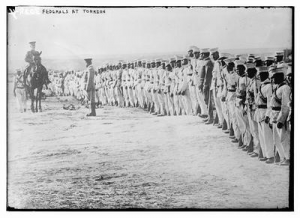
John Thompson, a railroad constructional man, was sent out to find what condition the track was and report. Six days passed and he had not returned and no word had come as to what happened to him.
Source of supplies exhausted.
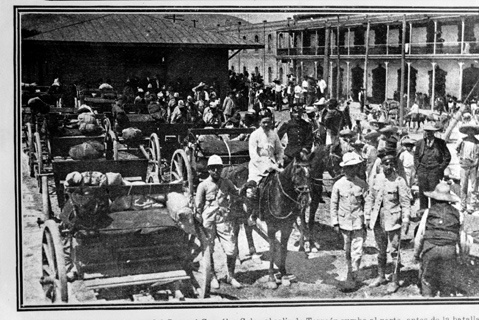
But for the fact that a great many car loads of food had been laid up in Torreon in transit and this had been confiscated by the general in charge of the the city we would have been in a starving condition long before. This source of supplies was exhausted and food was growing scarce with no hope of opening the railroad to the source of supplies. Meat was 75 cents a pound, lard $2 a pound, potatoes went to 50 cents a pound then gave out entirely; cheese went to $2.40 and ham to $2.
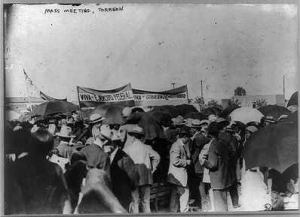
The banks were out of money. The Laguna bank turned down a check for $500 made by John Brittingham, a multimillionaire who was president of the bank. They said, they could give a check that would be cleared at any bank in the world, but then did not have the money. The Mexican government, in order to pay the soldiers, had demanded that the banks use their reserve gold supply to supply the army. Money was out.
At least three dates had been advertised as the time when the refugee train would leave during the twenty-two days of waiting. The last disappointment had so stirred the Americans that another postponement would have brought serious trouble. The United States government had said twenty-four days before “Get out at once.” and we were still there, being put off by the officials of the federal government.
When all was in readiness to depart the next morning we confronted a new difficulty. While the Americans were in the American bank, Mr Barrett, the bank president, was heard to say “There will be no train tomorrow.” Mr. Corothers was seen in the bank and when asked what the statement meant said that there would be no train unless he could raise $5,000 that night. A dissatisfied depositor, an American, had withdrawn all his money that day and the bank did not have the money to pay for the train. This deficit was met in some way, however, by Mr Corothers and the next day, September 15, the train was ready to carry 350 foreigners to the border.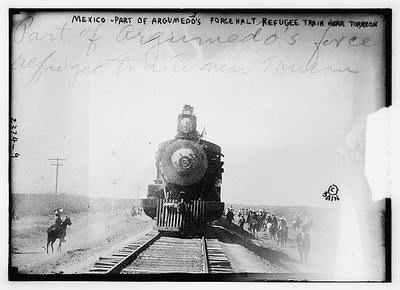
On Thursday September 21, we left Torreon at 11 o’clock with a train of thirteen cars consisting of two water cars, two cars of wood for the engine, one second-class car for food and cooking, two baggage cars, five first class passenger cars and one Pullman. An American negro was in charge of the engine and Frederick Waitt was appointed by Consular Agent Corothers to have the entire charge of the train as his representative.
We stopped at Gomez Palacio, 3 miles from Torreon, where we took on two more cars, one of which was full of nuns of the Romanist school there, all in uniform. We left Gomez at about 11:30 o’clock and went without delay to San Pedro 50 miles.
Bridges Burned (read this portion on the Escape from Mexico Page)
 Follow
Follow